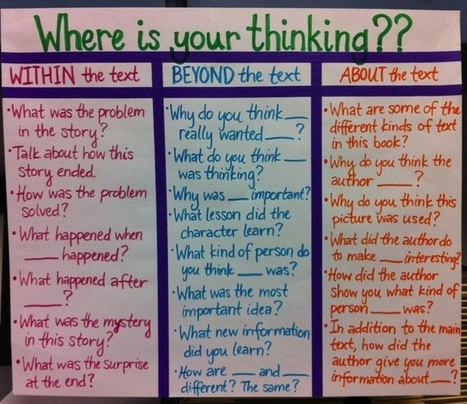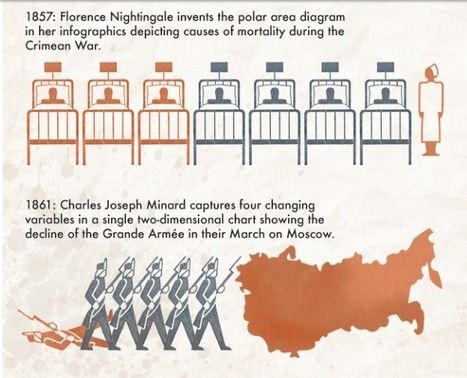Get Started for FREE
Sign up with Facebook Sign up with X
I don't have a Facebook or a X account

 Your new post is loading... Your new post is loading...
 Your new post is loading... Your new post is loading...
Beth Dichter's curator insight,
August 1, 2013 7:05 PM
This could be used as a great anchor chart for students to see when when reading text and preparing to respond to the text. Although the title says 20 questions I count 21 questions on this visual, questions that are require critical thinking skills, questions that may be used with a variety of texts (as required by Common Core). The questions are in three categories (information below quoted from the article): * Within the text - summaries, sequence of events, conflict/resolution, etc * Beyond the text - Inferencing, implicit ideas, evaluation, etc. * About the text - Author purpose, author style, characterization, etc. The post also relates the areas to Bloom's Taxonomy. You might also look at the question relative to Depth of Knowledge. |
Beth Dichter's curator insight,
August 3, 2013 10:22 PM
If you were to ask your students when infographics were first created what do you think their answer would be? What would your answer be? This infographic looks at "a timeline of timelines and infographics" and the result may surprise your students. It would be a good to use as an introduction to infographics along with the one that was put out using Legos to answer the question "What is an infographic?" located at |







![World Supplies of Non-Renewable Resources, Visualized [Environmental Infographic] | Help and Support everybody around the world | Scoop.it](https://img.scoop.it/y_fy5mV9xF1s1xAJ39O8ijl72eJkfbmt4t8yenImKBVvK0kTmF0xjctABnaLJIm9)


![Smart Grid – Where Power is Going [infographic] | Help and Support everybody around the world | Scoop.it](https://img.scoop.it/dylR2gPuxwkwSCw0lKarazl72eJkfbmt4t8yenImKBVvK0kTmF0xjctABnaLJIm9)





Giocando....s'impara!
Please teacher, more games!
Self explanatory visual on the benefits of gaming as a means of learning. Outlined are the rewards, mastery, engagement, intensity, exercise, readiness, and competitiveness. These types of graphics need to be displayed in the classroom. There's always parents who are unsure of how gaming qualifies as teaching. Can't they just sit their kid in front of an iPad all day at home? Well, in the appropriate setting, with the right direction and guidance, games are certainly good for learning. Some people just don't know that from experience yet.